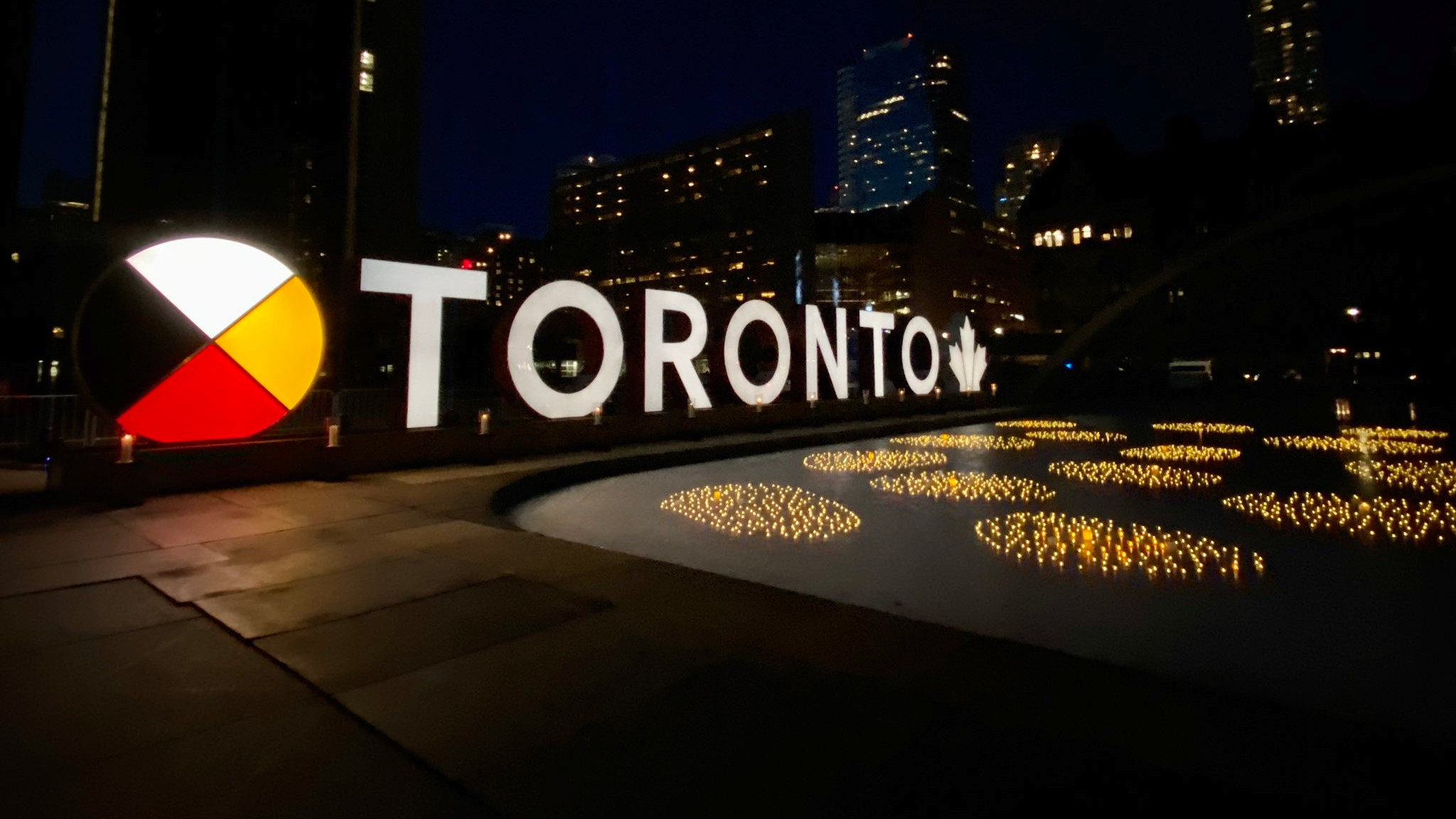The City of Toronto staged a virtual commemorative ceremony Sunday night to remember the more 2,700 Torontonians who lost their lives to COVID-19 in the past year.
WATCH: https://toronto.citynews.ca/2021/03/21/toronto-remembers-lives-lost-during-covid-19-pandemic/
The sunset vigil comes on the first anniversary of the very first coronavirus-related death in the city.
Candles were lit across the Nathan Phillips Square skating rink to mark each of the 2,750 lives lost to the virus as 12 bell tolled for the number of months that have passed.
“The loss experienced in our city over the past 12 months will forever be ingrained in our city’s history,” said Tory. “More than 2,750 people have died, representing our mothers, fathers, grandparents, friends, neighbours and colleagues. We must take time to reflect and mourn each and every person who is no longer with us and use light to help guide our city through these tragic times.”
“The memory of our loved ones will live through the darkness of night, through the burden of grief and into the light of a new day.”
“We’re almost there. And we know how good it can be when we get there.”
Tory said he would also seek public input into how to honour Torontonians who have died as a result of COVID-19.
Toronto-based blues vocalist and actress Shakura S’Aida read from the poem, “Do Not Stand At My Grave And Weep” by Margaret Elizabeth Frye, before singing “Amazing Grace” to close the ceremony.
Torontonians were encouraged to turn on a porch and/or balcony light or place a light in the window in remembrance of those whose lives have been lost as a result of the pandemic.

As Toronto approaches four months of strict pandemic measures that have kept hair salons shuttered, health officials in the city say they aren’t ruling out allowing haircuts and other such services to resume outdoors.
Toronto’s top doctor, Eileen de Villa, said this week that while the focus so far has been on outdoor dining and fitness, health officials are open to considering other activities that could take place outside.
“We don’t preclude discussions on any of the items that that might be outdoors, because we know for a fact that activities that are undertaken outdoors are clearly much lower risk than those that are indoors,” she said.
The city is currently in the “grey-lockdown” zone of Ontario’s colour-coded pandemic plan, which allows some retailers to open with limits but only permits restaurants to do takeout and delivery orders.
Local health officials have asked the province to loosen some of the restrictions on outdoor activities.
“It probably sounds like such a first-world problem but… one of the simplest things we can do right now is take care of ourselves and I feel like feeling like you’re put together is part of that”
Some Toronto salon owners, however, said Thursday that though they’re eager to get back to work, doing so outdoors poses several logistical challenges.
They noted the lack of outdoor space at many salons, particularly in the city’s downtown, as well as the absence of electricity and water, which are required to wash and blow-dry hair.
What’s more, they said stylists and their clients would be at the mercy of the weather.
“I’m happy to get to work on anything right now but I don’t see that as being a really smooth process unless we have sunny, calm, bright days every day, and they allow salons to spread out on the sidewalk or even onto the (street) parking,” said Tyler Moore, owner of Parlour Salon, which has three locations across the city.
Even then, the number of stylists able to work in that space would be limited, as would the type of services they could offer, Moore said.
“You can’t wash their hair because they can’t go in to get it washed, so it’s just haircuts,” he said.
Sonia Yarkhani, the owner of Evolve Salon, said working outdoors would require a specific setup that would likely not be feasible for most salons.
“Our industry requires certain things, it’s not as easy as slapping highlights in foil and letting them sit.. we need to have proper chairs, to have the proper space, you need to have a mirror outside, you need to have electricity,” she said.
“If you didn’t care about the quality of your work, and the experience of your customers, then yeah, I could just throw a chair on my balcony and I can cut someone’s hair. But is it going to turn out good? I don’t know,” she said.
Going to the salon is also an intimate experience, and some clients may not enjoy having that moved out in the open, Yarkhani said.
“You’re sitting there with wet hair, foils on your head… unless the outdoor space is private, people probably won’t feel comfortable being outside getting their hair done,” she said.
Aside from the possible discomfort of inclement weather or lack of privacy, being outdoors also poses technical challenges when it comes to working on hair, said Dat Tran, who owns Album Hair in Toronto’s east and west ends.
“You can’t control the temperature when it comes to colour,” he said. “Colour has to be room temperature or it doesn’t process really well. I don’t think a lot of people understand that aspect of it.”
He said it’s likely only a small percentage of salons would be able to move their operations outdoors.
A better solution to help struggling salons would be to designate hair stylists as frontline workers so they could be prioritized for vaccination, Tran said.
Toronto resident Allison Miceli said she hasn’t had a haircut since September, and at this point, she would be open to an outdoor appointment if it meant being able to see her stylist.
“It probably sounds like such a first-world problem but… one of the simplest things we can do right now is take care of ourselves and I feel like feeling like you’re put together is part of that,” she said.
Miceli said she’s been struggling to understand why salons have had to remain closed when some other businesses have reopened in some capacity.
“The government needs to find a solution so people in that field can also return to some sense of work,” she said.
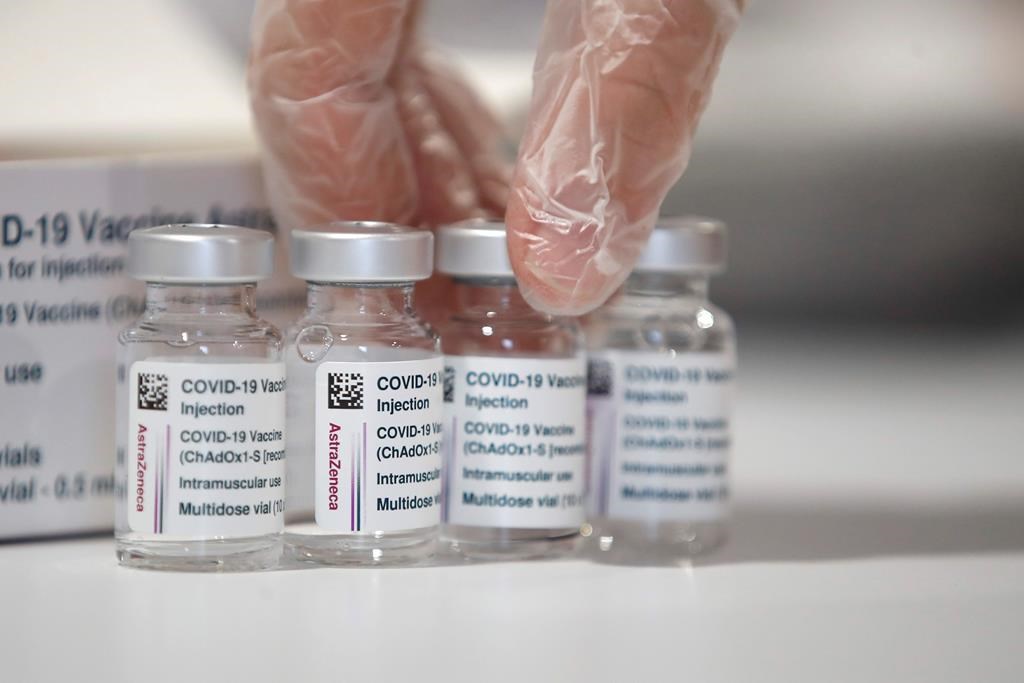
Canada’s procurement minister says a deal is close to receive Oxford-AstraZeneca vaccine doses from the U.S., while the military commander in charge of the rollout here says all adults who wish could be able to get their first shot by July 1.
“After numerous discussions with the Biden administration, Canada is in the process of finalizing an exchange agreement to receive 1.5 million doses of the AstraZeneca vaccine from the U.S.,” Anita Anand said on Twitter on Thursday.
“We look forward to providing an update to Canadians once the details are finalized.”
White House press secretary Jen Psaki said earlier that another 2.5 million doses would go to Mexico, but the details were still being worked out.
The United States currently has seven million “releasable” doses of the vaccine, which has yet to receive approval from its Food and Drug Administration, she said.
The loan would be in lieu of a future exchange of doses from Canada and Mexico, Psaki said – either of the AstraZeneca vaccine or a different one.
Premier Ford heard the news while at a press conference and said “God bless America” in response.
WATCH: https://toronto.citynews.ca/2021/03/18/u-s-lending-canada-mexico-astrazeneca-covid-19-vaccine/
“They’re coming to our rescue. Thank God. I’ve been bugging Trump, I’ve been bugging Biden — all of them. They must get sick of Doug Ford asking for help,” he said.
In January, Ford appealed directly to Biden to help Canada by sending a million doses of the Pfizer-BioNTech vaccine from a plant in Michigan.
Ford said today that he understands the United States would vaccinate its own citizens first, but he’s grateful they’re now trying to help their allies.
“President Biden, thank you … that’s what true neighbours do, you help each other out in a crisis,” he said.
U.S. President Joe Biden did not address the vaccine exchange when he updated Americans on that country’s vaccination progress.
He said the U.S. will have administered 100 million shots by Friday and that the country is on track to have enough vaccine supply to inoculate all adult Americans by the end of May.
Last week, Canadian provinces began administering 500,000 doses of the version of the AstraZeneca vaccine produced at the Serum Institute of India.
The federal government has purchased 20 million doses directly from AstraZeneca, but did not have a timeline for when they would arrive.
Regulators in Europe and the United Kingdom have concluded the benefits of the AstraZeneca vaccine outweigh the risks, but both are still studying whether the shot had any link to a small number of rare brain blood clots.
Earlier Thursday, Maj.-Gen. Dany Fortin, who is overseeing Canada’s vaccine program logistics, said provinces should have enough doses by the end of the next quarter for everyone who wants to be vaccinated.
But he later clarified that depends on provinces continuing to delay second doses up to four months so that more people can get their first shot sooner, as well as supplies coming in as planned.
“While there is no indications of disruptions or fluctuations in the production, it is a pandemic with global demand on vaccines that are produced as rapidly as possible,” Fortin said in Ottawa.
“We are always subject to fluctuations in the production and the challenges of a complicated supply chain across the world and into this country.”
Although initial deliveries from Johnson & Johnson and shipments directly from AstraZeneca are still in limbo, there is more than enough from Pfizer-BioNTech, Moderna and the Oxford-AstraZeneca vaccine made in India to pass the one-dose-per-person target by the end of June.
Procurement numbers show there are 36.5 million doses confirmed to be shipped by June 30. Only people over the age of 16 can currently be vaccinated and about 31 million Canadians are in that age group.
Ottawa still says Canadians will be fully vaccinated by the end of September.
Canada’s deputy chief public health officer Dr. Howard Njoo said almost seven per cent of Canadians have now received at least one dose of a COVID-19 vaccine, and 1.6 per cent have received two doses. The vast majority of doses given in the past two weeks have been first shots.
with files from News Staff, Mia Rabson in Ottawa, James McCarten in Washington and Shawn Jeffords in Toronto.
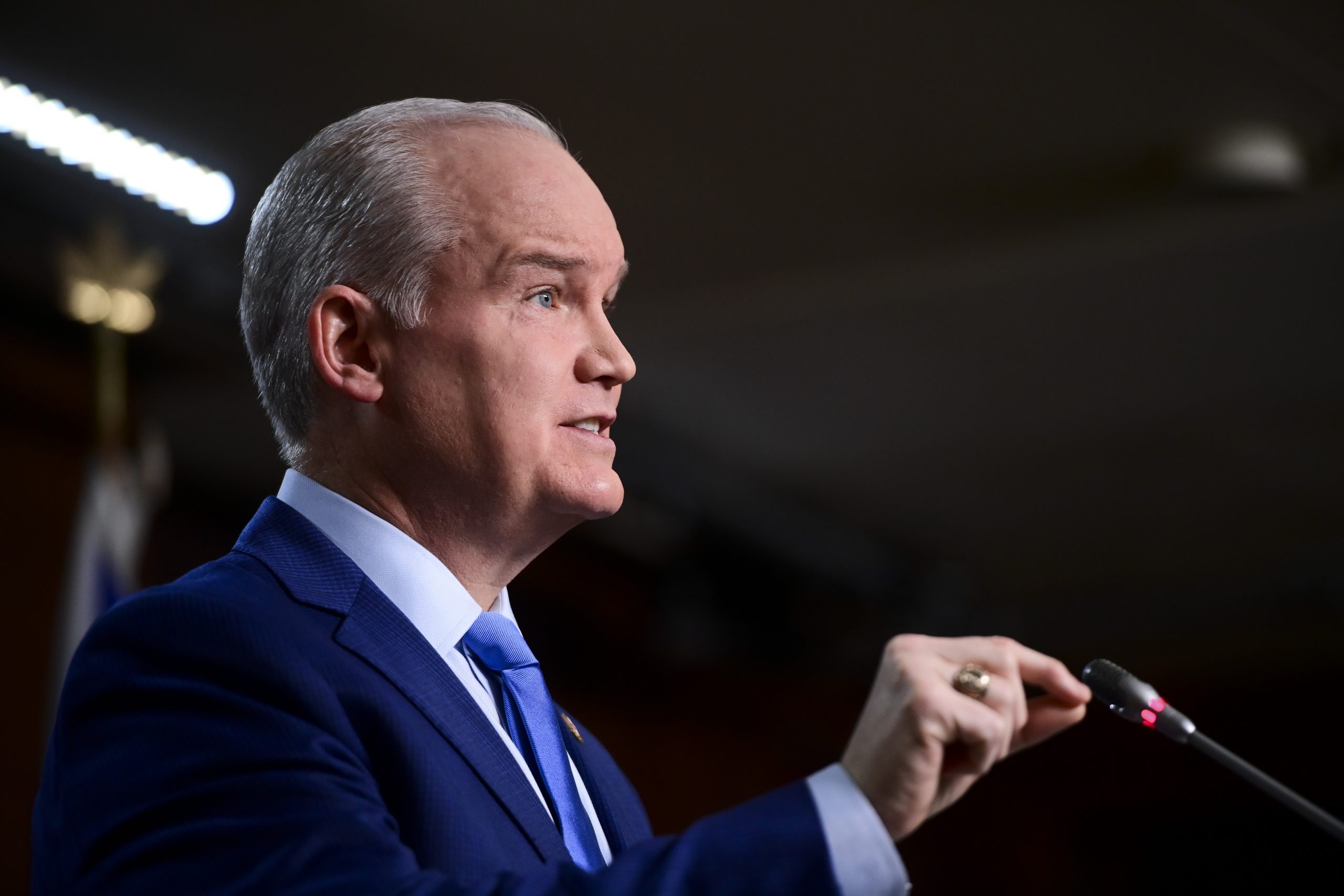
The Conservatives have yet to fulfil a promise to repay the federal wage subsidy, but the party said Thursday it is in solid financial shape and urged its members to rally together for the next federal election.
Still, the tensions between the grassroots and the party’s leadership were on display as thousands of members gathered virtually for the first policy convention since Erin O’Toole became leader last summer.
He’ll address the delegates in a highly-anticipated speech late Friday afternoon, after members have a chance to debate the policies they’d like to see O’Toole carry onto the campaign trail, and also how they’d like to see him run the party itself.
Both issues are on the table after the 2019 federal election saw the Tories fail to form government, and then slip into an internal scandal linked to the use of party funds to pay former leader Andrew Scheer’s personal expenses.
Grassroots anger over the use of party funds in that respect became an element of the subsequent leadership race.
But members were also irritated to learn the party used taxpayers’ dollars to subsidize political operations, taking advantage of the federal wage subsidy set up to help businesses pay workers despite a loss of revenue during the COVID-19 pandemic.
During his leadership campaign, O’Toole pledged to reform party operations and put a stop to receiving the wage subsidy, which he promised to pay back.
After he won, the party did stop dipping in, but outgoing party president Scott Lamb told thousands of delegates Thursday that repayment hasn’t begun.
“We look forward to repaying what we took from the wage subsidy program and give it back to Canadian people,” Lamb said.
The Bloc Quebecois was the only party in the House of Commons never to apply for the money. The Liberals and NDP also stopped taking it.
The federal Conservatives have outpaced their rivals in fundraising efforts for years, and even with the pause forced by the COVID-19 pandemic, they still ended 2020 ahead.
The party’s chief financial officer Scott Gibson told the convention the party is debt-free, and in 2020, raised $20.7 million.
“We ended the year with sufficient money in the bank, more than budgeted, to fund significant pre-election activities in order to support the new leader in advance of the next election, which may be very soon,” he said.
The update on the party’s financials was the first piece of official business for the convention, which kicked off Thursday not with balloons or rousing cheers, but with instructions on how to click the right links.
The COVID-19 pandemic has forced the event entirely online, and organizers tried to instil some of the normal camaraderie found on the convention floor via videos submitted by members proclaiming their love for Canada through songs, shots of honking geese on the river and container ships in harbours.
The opening elements of the convention also featured an appearance by former Conservative prime minister Stephen Harper, who paid tribute to the former head of the party’s fundraising arm, Irving Gerstein.
Tension over how Gerstein and Harper ran the party’s fundraising operations – the Conservative Fund operates distinct from the party’s overall governance – coloured the final days of Scheer’s tenure.
The fallout from that debate, which included how party funds were used for Scheer’s personal expenses and how much power the fund has to hire or fire party staff, came back around at the convention.
Members debated several motions aimed at changing the operation of the party’s governing council, the Fund, how leaders are selected and who can vote in those contests.
Results were not expected from the electronic voting until late Thursday night.
But one issue was dealt with cleanly – an effort by anti-abortion members of the party to introduce amendments to the party’s constitution from the “floor” of the convention, in order to get the party’s principles to reflect a clear anti-abortion stance.
Those members had tried to get the issue added to the convention’s policy discussions but failed so they then tried a different route through the party’s constitution.
But that effort was ruled out of order Thursday, under new rules adopted for the virtual convention format.
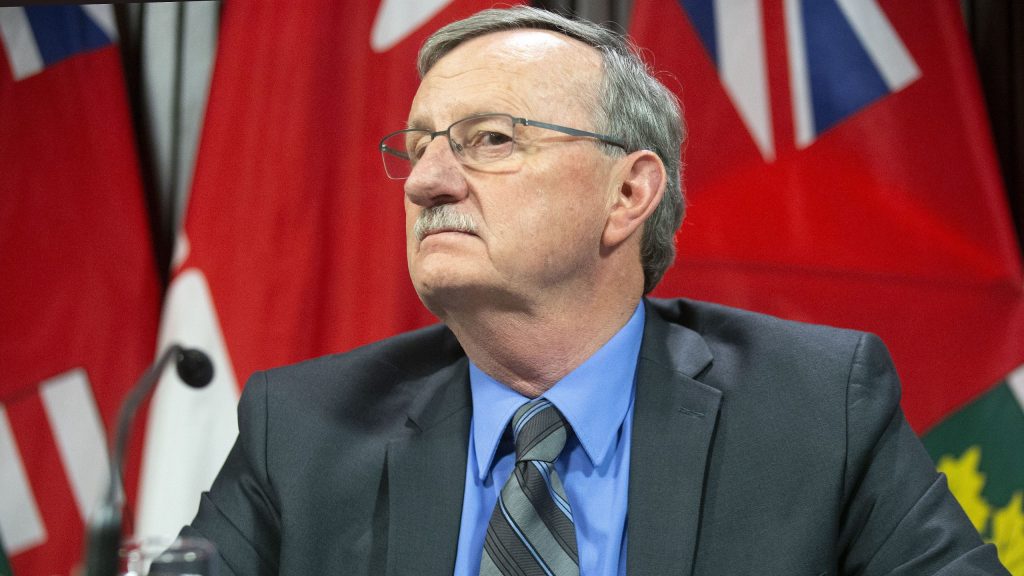
Ontario could loosen some restrictions for Toronto and Peel Region to allow outdoor restaurant dining and fitness while keeping a lockdown in place, Premier Doug Ford said Thursday as the province tightened measures for another region.
The top doctors in Toronto and Peel have asked to have their communities remain in the strictest “grey lockdown” category of Ontario’s pandemic framework but with the rules modified to allow for some currently shuttered services to be offered outdoors.
Ford said he was open to the idea and noted that the province’s chief medical officer was discussing the issue with the two hotspots.
“Would I be in favour of letting people get outside and get some air? Absolutely,” Ford said. “But I’m sticking with the health and science. And if all three doctors agree, then we’ll take their advice.”
Both Toronto and Peel have been in lockdown since last November, when surging COVID-19 rates caused the province to impose strict public health measures.
The “grey lockdown” category allows retailers to open with restrictions but limits restaurants to takeout and delivery and keeps gyms and personal care services closed.
Toronto’s top doctor said she expects the province will announce its decision on the request to modify the rules on Friday.
Ontario’s chief medical officer of health said Thursday that the province was in a third wave and he was concerned about the rising levels of COVID-19 variants in Toronto and Peel.
“We’re asking ourselves what can we do to work with them?” Dr. David William said of the two regions’ request for adjusted restrictions.
“We hope to be able to come up with some ideas as to how we might be able to help everybody stay at the task and keep this third wave under control, because we really don’t want to see it take off in Toronto and Peel.”
Williams warned that the seven day average for case numbers, positivity and deaths had all increased and urged people to continue to follow public health advice on masking and physical distancing.
“While we are entering the third wave, the question is what type of wave will it be?” he said. “We don’t know right now.”
Earlier Thursday, the government said it would be tightening restrictions for Ottawa on Friday due to a rise in cases there.
The city will move to the second-strictest “red” level of the province’s colour-coded pandemic framework, which means retail stores will have capacity limits, indoor restaurant dining will see restrictions tightened and cinemas will close, among other things.
The government said the decision was made after Ottawa’s medical officer of health requested the change due to “concerning trends” in the region.
The local public health unit said the case rate in the region rose by 24.8 per cent between March 10 and March 15. Eighty-two new cases were reported Thursday.
Meanwhile, Ford said Thursday that nearly half of Ontario residents aged 80 and older had received a first dose of a COVID-19 vaccine.
The province’s vaccine booking portal and call centre have now scheduled appointments for 400,000 people, he added.
Ford acknowledged that there were “bumps in the road” when the booking portal came online Monday, but those have been resolved. He asked people to continue to sign up for the shot, and stressed the province needs to receive more vaccines.
“We’re on our way to being able to administer 150,000 doses per day across the province,” he said. “But as I keep saying, that all depends on one thing, the supply of vaccines.”
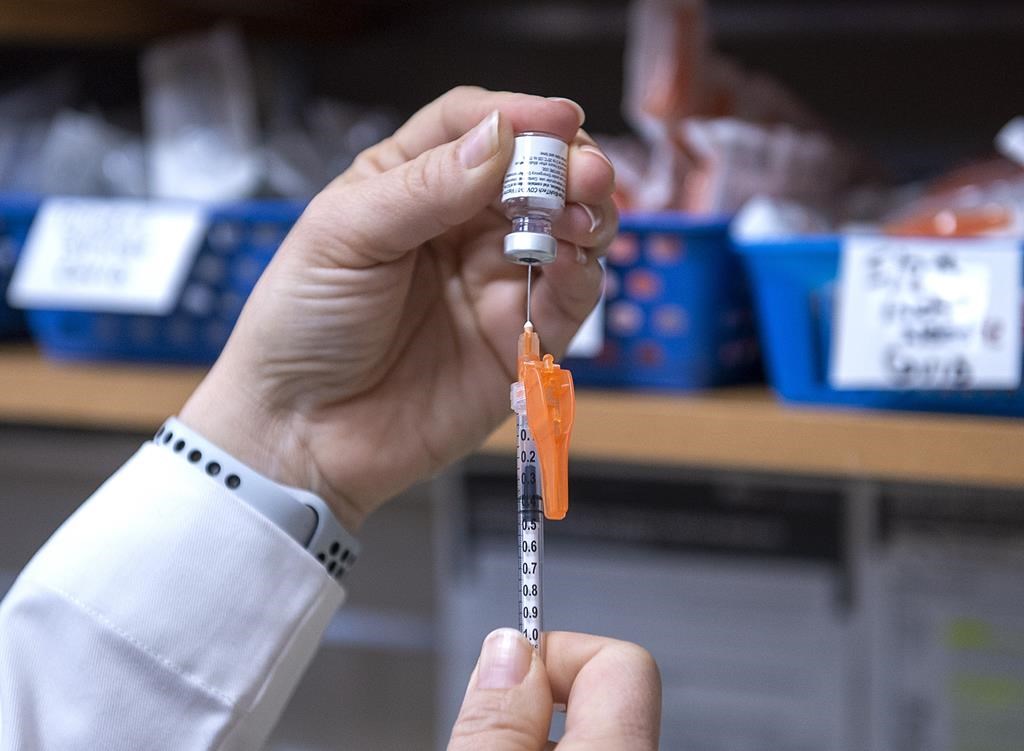
York Region says residents who were born in 1946 and before can begin booking appointments beginning at 8:30 a.m. on Thursday, March 18.
York says it’s advancing eligible residents for COVID-19 vaccinations to residents age 75 years and older as it continues to deliver vaccines identified in the province’s vaccine distribution plan.
Vaccines will be available for the new eligible priority group at these locations:
- Aaniin Community Centre (Opening Monday, March 22, 2021)
- Cornell Community Centre
- Cortellucci Vaughan Hospital
- Georgina Ice Palace located
- Maple Community Centre
- Ray Twinney Recreation Complex
- Richmond Green Sports Centre
It says the clinic dates and times vary for each location, and recommends visiting York’s website to check for clinic details.
Residents can book their COVID-19 vaccination appointments online or by phone.
“York Region Public Health, in partnership with our hospital and paramedic services partners, is working to ensure all eligible and vulnerable residents who cannot attend a clinic receive a COVID-19 vaccine. The approach to reach these homebound individuals is through our mobile outreach teams; however, some may also find the drive-thru clinics opening soon as a good option,” the region says in a statement. “Outreach will begin to homebound individuals receiving homecare next week. The drive-thru site at Canada’s Wonderland is scheduled to begin operations the week of March 29, 2021. Drive-thru clinics will also be by appointment only.”
York says as the vaccine supply increases, it encourages residents to keep checking for appointments that become available, and is asking residents to cancel any appointments they do not plan to use.
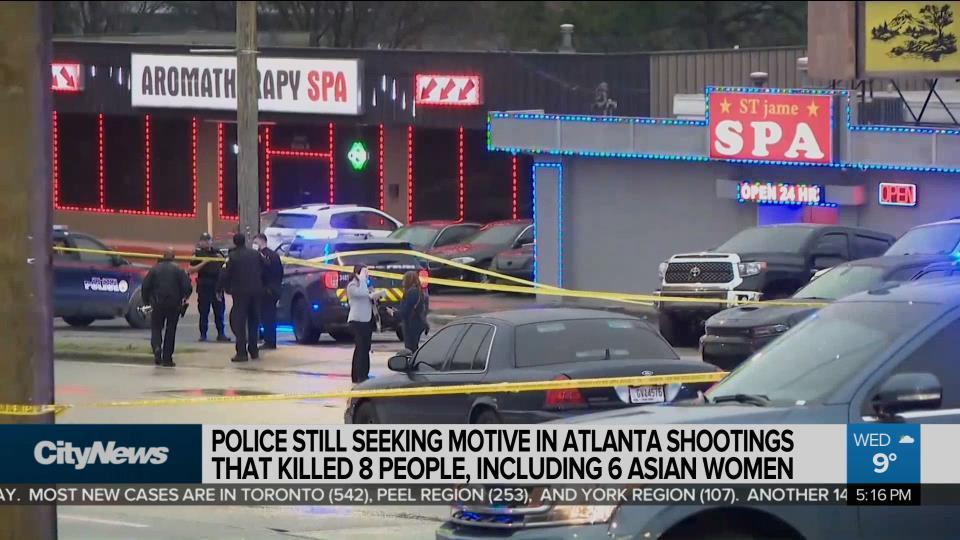
OTTAWA — Asians across North America are in shock after a shooting outside Atlanta, Georgia killed eight people at spas.
WATCH: https://toronto.citynews.ca/2021/03/17/atlanta-shooting-symptomatic-of-larger-issue-of-asian-women-being-oversexualized-in-media-experts/
Six of the victims were Asian women.
Some say this isn’t just part of the current wave of anti-Asian racism but is part of a longer trend of over-sexualization of Asian women in media.
“They’re shown as submissive people, or as a sex object,” said Anita Liu, human rights and gender equality specialist. “Lucy Liu? She’s always this femme fatale, wearing this leather skin-tight bodysuit. So, we’re either ninjas, or we’re these weak people in need of help of a white saviour.”
Liu says depictions of Asian women in popular media have historically lacked depth — portraying Asian women either as over-the-top dangerous seductresses or submissive stereotypes.
“The stereotype is also that we’re sexualized, we’re objectified, we are not human,” said Amy Go with the Chinese Canadian National Council for Social Justice. “We are sexual beings to be preyed [upon], to be serving the white man at their pleasure. That’s the whole portrayal of Asian women.”
The trend has been propagated for more than half a century. More nuanced, complex depictions of Asian women are only now beginning to emerge.
But many of those perceptions do real harm.
“You watch TV. You watch all these Asian women being sexualized, in terms of portrayal. Your day-to-day life is defined by those messages and that broader, society image of you,” said Go.
WATCH: https://toronto.citynews.ca/2021/03/17/atlanta-shooting-symptomatic-of-larger-issue-of-asian-women-being-oversexualized-in-media-experts/
While American authorities say the Atlanta spa killings were motivated by sex addiction, a local Korean newspaper reports eyewitnesses said the shooter said he was there to kill Asians.
Amy Go says it’s not just one or the other — the two are inexorably linked.
“This is a racist, misogynist attack. No ifs, ands, or buts. He particularly picked those target places, knowing Asian women were there. Knowing targets were there. Don’t tell me that it is not both,” said Go.
Liu adds that there’s a clear class element to this crime. Though nominally spas, reviews on Google make it clear that at least one of the locations targeted was a brothel.
Liu says women in sex work — especially racialized women — are in a particularly vulnerable position: more prone to violence and sometimes without the ability to find help.
–with files from Xiaoli Li

Intolerably suffering Canadians who are not near the natural end of their lives now have the right to seek medical assistance in dying.
And that will eventually include people suffering solely from grievous and irremediable mental illnesses.
The expansion of Canada’s assisted dying regime went into effect Wednesday night after the Senate accepted a revised version of Bill C-7.
The bill received royal assent a few hours later – just over a week ahead of a final March 26 deadline imposed by the court, which had granted four extensions to bring the law into compliance with a 2019 Quebec Superior Court ruling.
With royal assent granted, intolerably suffering Canadians who aren’t near death immediately gained the right to seek medical assistance in dying.
People suffering solely from mental illnesses will have to wait two years to gain the same right.
The government had originally intended to impose a blanket ban on assisted dying for people suffering solely from mental illnesses. But, under pressure from senators who believed that exclusion was unconstitutional, it subsequently put a two-year time limit on it.
In the meantime, the government committed to setting up an expert panel to advise on the safeguards and protocols that should apply to people with mental illnesses.
The government rejected a Senate amendment to allow people who fear losing mental competence to make advance requests for an assisted death.
But it committed to launching within 30 days a joint parliamentary committee to review that issue and other unresolved matters, including whether mature minors should have access to the procedure.
“For Canadians who are suffering intolerably, this process has taken too long, but their wait is now over,” Justice Minister David Lametti tweeted shortly after the bill received royal assent.
“This is an important milestone but there is more work to do.”
The bill was triggered by two Quebecers with severe disabilities who went to court to successfully fight for their right to choose an assisted death even though their natural deaths were not “reasonably foreseeable.”
But disability rights groups have strenuously opposed the bill, arguing it devalues the lives of people with disabilities, particularly those who are Black, racialized, Indigenous or otherwise already marginalized and face discrimination in the health system. They fear such vulnerable people will be pressured – either directly or indirectly through societal attitudes and lack of support services – to end their lives prematurely.
Many mental health advocates have also weighed in against the eventual inclusion of people suffering solely from mental illnesses. They argue that it’s harder to predict the outcomes of mental illnesses, many of which can be treated, and point out that a wish to die is often a symptom of these illnesses.
But Sen. Stan Kutcher, a psychiatrist and member of the Independent Senators Group who first proposed a time limit on the mental illness exclusion, argued that all competent Canadians suffering from irremediable and grievous illnesses, physical or mental, deserve the right to make their own choice.
“It is not for us to decide if a person’s suffering is intolerable to them,” he told the Senate shortly before the vote.
Dying with Dignity Canada welcomed the Senate’s sign-off on the bill, calling it “a momentous day for end-of-life rights in Canada.”
All 20 Conservative senators voted against the bill, several because they believed it didn’t go far enough but most were fundamentally opposed to expanding the assisted dying regime, particularly to those with mental illnesses.
In an emotional speech just before the vote, Conservative Senate leader Don Plett pleaded with his colleagues to reject the bill.
“If there was ever a time to exercise sober second thought, it is now,” he told the Senate.
“It is not often that we can truly say that with this vote we have the opportunity to save lives, to prevent the unnecessary premature death of the vulnerable, to offer hope to those who have lost it. But today we do.”
For people who are near the natural end of life, the bill relaxes some of the rules for getting an assisted death.
It drops the requirement that a person must be able to give final consent immediately before the procedure is performed. That’s intended to ensure that someone who has been approved for the procedure won’t be denied if they lose mental capacity before it can be carried out.
It also drops the requirement that a person must wait 10 days after being approved for an assisted death before receiving the procedure. And it reduces the number of witnesses required to one from two.
People not near death will face higher hurdles.
Among other things, they’ll face a minimum 90-day period for assessments of their requests for an assisted death. They’ll have to be made aware of all alternatives, including counselling and they’ll have to be able to give final consent immediately before receiving the procedure.

Toronto’s top doctor says the city is not ready to enter the red zone of the province’s COVID-19 reopening framework yet.
WATCH: https://toronto.citynews.ca/2021/03/17/torontos-top-doctor-says-city-should-not-enter-red-zone-of-covid-19-reopening-framework-yet/
Stay-at-home orders were lifted in Toronto on March 8 and the city entered the province’s grey-lockdown zone — which permits non-essential retail stores to open with capacity limits, among other allowances.
In the city’s daily COVID-19 briefing on Wednesday, Dr. Eileen de Villa said she does not recommend any further lifting of restrictions.
“At this time, it is my view, the data do not support the kind of reopening that would be provided for under the red zone designation,” she said.
However, similar to Peel region, the city is in discussions with the province about modifications to the grey-zone restrictions, particularly in regards to outdoor activities which are lower risk for transmission of COVID-19.
Dr. de Villa said the city has expressed “openness to a modest expansion of the options open to people in Toronto.”
“Everyone sees the exhaustion within the city as it relates to all the limitations COVID-19 has forced upon us,” she added. “This is why modest steps forward in the realm of outdoor activity are a good proving ground at this time.”
Mayor John Tory said some of the activities being discussed include outdoor dining and outdoor fitness and exercise — areas where the city has some past experience in keeping people safe.
But Tory stressed the discussions are currently underway and nothing has been finalized, but officials want Torontonians to know that talks are ongoing.
“Changes to the grey zone, of course, would have to be made by the province,” he said. “No one should start making changes, no one should start making plans or placing orders right now.”
De Villa also added that the changes would be incremental and very cautious. Should any changes lead to an increase in cases, especially as the city grapples with the spread of variants of concern, she will not hesitate to call for actions to reverse course.
“We all need to understand what might happen at any point as we move ahead in the next stretch of time,” she said. “Even small steps forward, permitting additional outdoor activities, do not signal that the threat has been reduced to an extent that we can let our guard down when it comes to self protection,” given that VOC continue to spread.
De Villa said there have been no clear statements from the province about exactly what should or should not reopen under continued grey-lockdown restriction, but said the city was involved in a “collaborative discussion around what makes sense given the unique circumstances in Toronto.”
The province is expected to announce its decision on Friday.
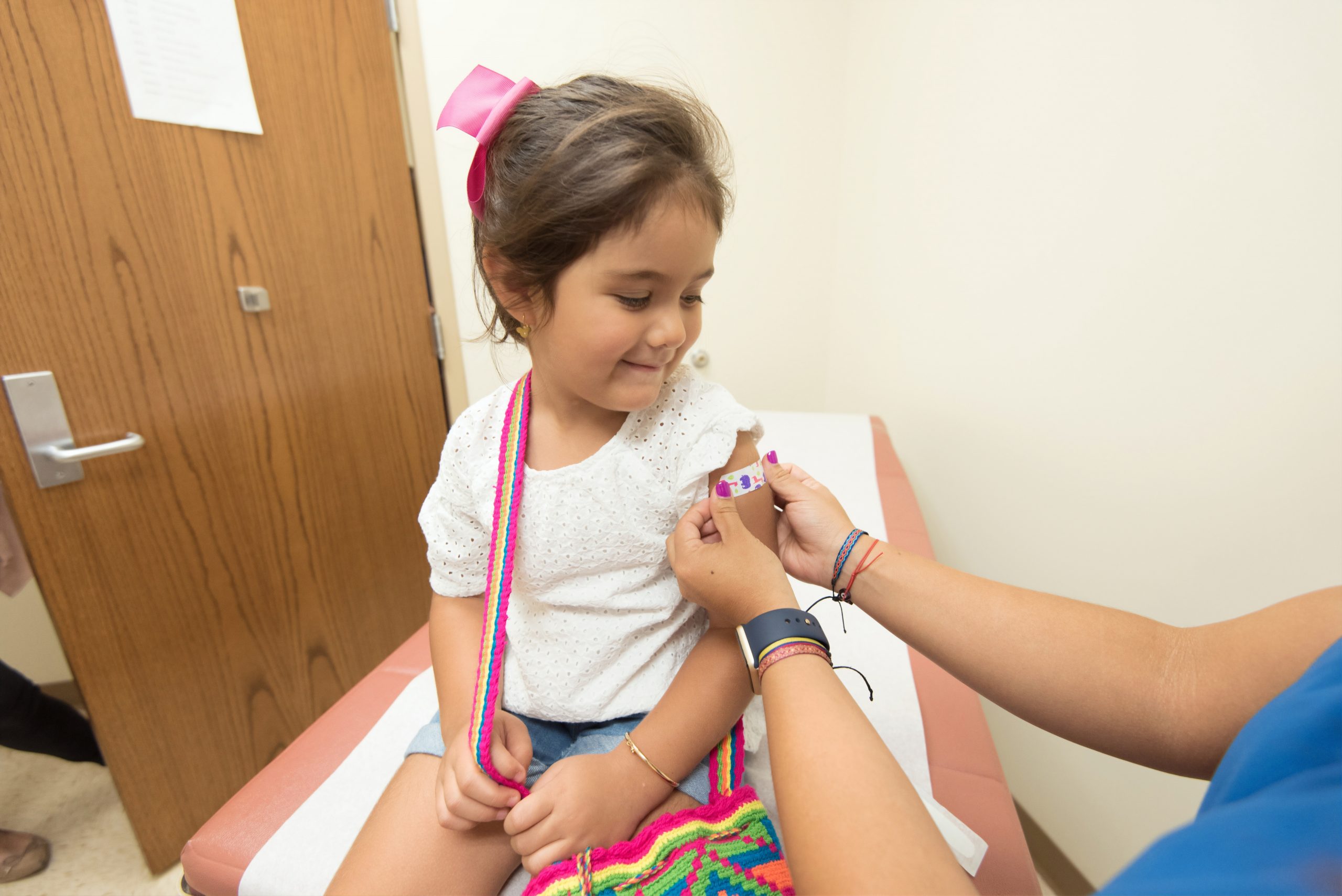
One of Canada’s four approved vaccines is prepared to be tested on children across the country.
On Tuesday, Moderna announced the first 6,750 pediatric participants in Canada and the U.S. have been selected in a Phase 2/3 trial called the KidCOVE study in children ages 6 months to less than 12 years.
Moderna says the study is being conducted in collaboration with the National Institute of Allergy and Infectious Diseases (NIAID), part of the National Institutes of Health (NIH), and the Biomedical Advanced Research and Development Authority (BARDA).
“We are pleased to begin this Phase 2/3 study of mRNA-1273 in healthy children in the U.S. and Canada and we thank NIAID and BARDA for their collaboration,” said Stéphane Bancel, Chief Executive Officer of Moderna.
“It is humbling to know that 17.8 million adults in the U.S. have received the Moderna COVID-19 Vaccine to date. We are encouraged by the primary analysis of the Phase 3 COVE study of mRNA-1273 in adults ages 18 and above and this pediatric study will help us assess the potential safety and immunogenicity of our COVID-19 vaccine candidate in this important younger age population.”
As part of the process, Moderna will evaluate the safety, tolerability, reactogenicity, and effectiveness of two doses given 28 days apart.
Moderna says in Part 1 of the study, each participant ages two years to less than 12 years may receive one of two dose levels.
Also in Part 1, each participant ages six months to less than two years may receive one of three dose levels.
Participants will be followed through 12 months after the second vaccination.
Currently, Moderna’s COVID-19 vaccine is authorized for use in individuals 18 years of age and older.
“Vaccine effectiveness will either be understood through achieving a correlate of protection, if established or through immunobridging to the young adult (ages 18-25) population,” said Moderna.
Vaccine deliveries from Moderna are expected to bring 846,000 doses in Canada through the week of March 22.
In Ontario, shipments are expected to grow from just over 160,000 through the week of March 8 to over 320,000 doses expected to arrive in the week of March 22.
With the extended intervals between the first and second doses, the National Advisory Committee on Immunization (NACI) projects 80 percent of Canadians over the age of 16 could receive a first dose of the Pfizer or Moderna shot by the end of June.
The timeline could move up even more once Johnson & Johnson vaccines arrive in Canada.









